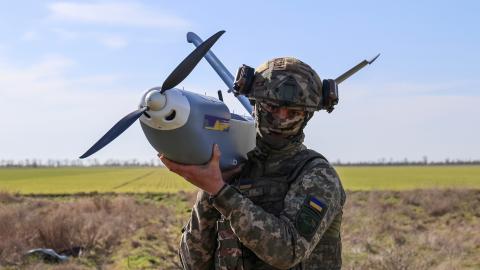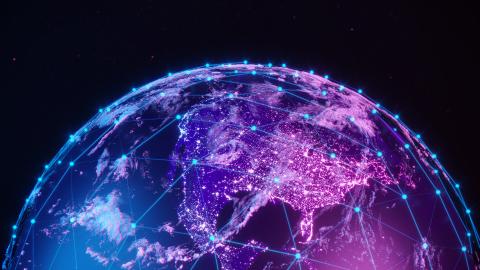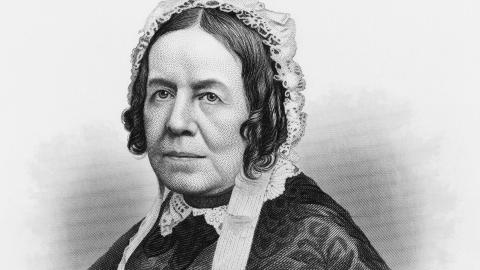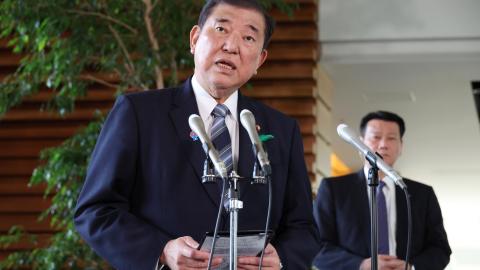It has been over a month since U.S. President Donald Trump announced his "Liberation Day" tariffs.
Despite the threat of tariffs, Japan was seen as one of the few countries that could negotiate an early deal with the Trump administration -- possibly setting the standard for others hoping to make a deal.
But last week, the U.K. became the first country to secure such a deal. While this, and recent progress on U.S.-China trade negotiations, shows the White House is ready to start cutting deals, unless there's an agreement to significantly reduce the levy on auto imports coming from Japan, a U.S.-Japan trade deal is nowhere in sight.
While the U.S.-U.K. deal makes some tariff reductions, a similar deal won't be enough for Tokyo.
On the outside, trade negotiations between the U.S. and Japan appear to be progressing, as officials continue to meet regularly. There's been additional progress as currency and military-related matters are rightfully being excluded from the talks. But a lack of compromise and clarity by the U.S. side are making the Japanese team hesitant.
There are still three major components to a U.S.-Japan trade deal that need to be fleshed out before Tokyo will sign on to anything.
The first is the Liberation Day tariff. Imports from Japan face a 24% levy if a deal isn't concluded within the next couple of months. The Trump administration has instead applied a 10% tariff in the interim until a deal is made.
Ideally, Tokyo would like to see no new tariffs. But there's an increasing consensus across capitals that a 10% tariff will be the new normal for any country looking to export to the U.S.
That is except for China, which surprisingly saw a 115-percentage point reduction in tariff threats over the weekend and will only see an additional 30% tariff for the next 90 days as trade negotiations continue. It's hard to imagine the tariff rate on China falling as low as 10% once there's been another U.S.-China trade deal.
While it's higher than Japan is used to, realistically, a 10% tariff on exports to the U.S. is something Prime Minister Shigeru Ishiba's government may be willing to live with. But that's only if an equal 10% tariff is applied to other countries as well. Japan would not want to have a higher Liberation Day tariff rate compared to economic competitors like South Korea or those from the European Union.
This 10% rate is also what the U.K. was able to achieve for its exports to the U.S., except for a few exclusions. A big difference between the U.K. and Japan, however, is that Britain was originally threatened with a 10% Liberation Day tariff unlike Japan's 24%. The U.K. didn't have to "negotiate down."
The second component of the negotiations is arguably the most difficult: sector-specific tariffs on goods such as steel, aluminum, passenger vehicles and automobile parts.
Japan would like to see these tariffs removed or lowered, but recent reports suggested the White House appears less flexible on these issues.
That was until the U.S.-U.K. deal was announced. The arrangement shows greater flexibility than was expected by removing a 25% tariff on steel and 10% tariff on aluminum exports from Britain.
It also creates a quota for auto imports. The first 100,000 vehicles from the U.K. will only see a 10% tariff while any additional vehicles will get a 25% tariff. This is ideal given the U.K. exports just over 100,000 vehicles to the U.S. each year.
For the Ishiba government, steel and aluminum tariffs are negligible compared to the 25% tariff on auto trade, given that Japan exported more than 1.3 million vehicles to the U.S. last year. A similar 100,000 vehicle quota at 10% would be a deal breaker for Japan.
A recently announced partial import refund for vehicles that undergo final assembly in the U.S. also shows there's some flexibility in the White House with these auto tariffs, but it still isn't enough for Tokyo without a guarantee to limit auto tariffs.
There also won't be a deal on Liberation Day tariffs without a deal that includes auto tariffs as a third of Japan's exports to the U.S. are in autos.
The last component, but arguably least consequential of these negotiations, is the threat of future tariffs. The Trump administration is currently undergoing trade investigations that could potentially see additional tariffs on other sector-specific imports of semiconductors, pharmaceuticals, various minerals and trucks.
There's no knowing right now if there will be tariffs on these products, when they will be announced or at what rate their respective rates could be. But given the proclivity for tariffs by this White House, these products could likely see a 25% increase this year.
What this all means for Tokyo is that there's very little clarity on what U.S. trade policy will look like next week, let alone in a couple of months. Tokyo doesn't want to negotiate and invest in a deal tomorrow just to see new tariffs on its exports next month.
The U.S. agreed to grant the U.K. preferential treatment with future tariffs, but that doesn't mean no new tariffs.
In the meantime, Tokyo is offering up what it can to help ease trade tensions with the U.S. This includes possibly accepting U.S. Federal Motor Vehicle Safety Standards, buying more American agricultural and industrial goods, and other efforts that may reduce the U.S. trade deficit or support America's reindustrialization. This is similar to the U.K.'s agreement to open up access for U.S. farm exports.
Right now, Tokyo is focused on the carrots it has to offer the White House through these negotiations. While Tokyo does have some sticks it could use if negotiations were to fall apart, the Ishiba government doesn't want to play hardball with a Trump administration it's still hoping to get along well with.
While the White House may think the threat of tariffs is what's bringing countries like Japan, U.K. and China to the negotiating table, diplomacy and support for the U.S.-Japan alliance is what's keeping the Ishiba government engaged at this point.
That being said, unless there's greater compromise on the Trump administration's auto tariffs, there's no telling whether a U.S.-Japan trade deal is possible before the clock on the Liberation Day pause runs out.



















